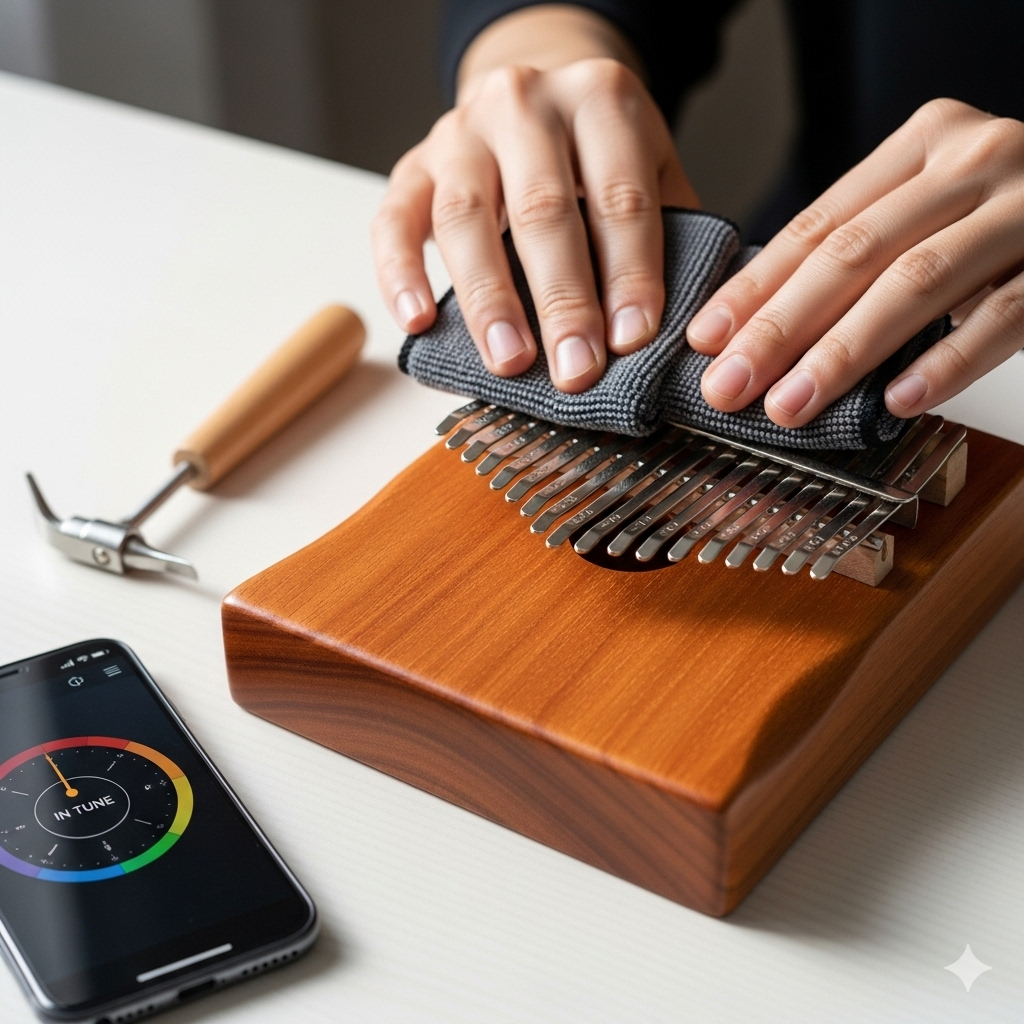Stop Letting Your Kalimba Go Out of Tune! 3 Must-Know Maintenance Secrets for Beginners.

Introduction: Your kalimba is your musical companion. It's made of precious wood and metal keys, and just like any other musical instrument, it needs your careful attention. Good daily maintenance not only keeps its sound clear but also extends its lifespan. This guide will provide you with the most comprehensive kalimba maintenance secrets, helping you, whether you're a beginner or a seasoned player, keep your instrument in its best condition all year long.
1. The Three-Step Daily Maintenance Routine: Keeping Your Instrument Vibrant
1.1 Moisture and Sun Protection: The #1 Enemy of the Wooden Body
A kalimba's soundbox is often made of solid wood, which is very sensitive to changes in environmental humidity and temperature.
-
Moisture Protection: High humidity can cause the wood to swell, warp, or even grow mold, affecting the sound quality. When not in use, place your kalimba in its case or a dedicated moisture-proof box, and consider adding a desiccant pack.
-
Sun Protection: Avoid leaving your kalimba in direct sunlight for extended periods, such as on a windowsill or in a car. High temperatures and direct sunlight can cause the wood to crack, discolor, and even affect its tuning.
1.2 Timely Cleaning: Say Goodbye to Fingerprints and Grime
After every playing session, fingerprints and grime are left on the keys, which are the main culprits behind rust.
-
Key Cleaning: Use the included cleaning cloth or a soft, dry cloth to gently wipe the surface of each key to remove fingerprints and sweat.
-
Body Cleaning: Use a dry, soft cloth to wipe the body and keep the wood clean. If there are stains on the body, you can use a slightly damp cloth, but be sure to immediately wipe it dry with a clean cloth.
1.3 Regular Tuning: Keep the Tone Pure
Even if you don't play often, your kalimba's pitch can shift due to environmental changes.
-
Tuning Frequency: It's a good idea to check the tuning once every week or two. If you notice that a key's sound is not clear or is out of tune, you should tune it immediately.
-
Tuning Tools: Use a tuning hammer and a tuning app on your phone (such as Gstring, Tuner Lite, etc.). Gently tap the bottom or top of the key to adjust its pitch and ensure it's in tune.
2. Advanced Maintenance & Troubleshooting
2.1 Oiling for Maintenance: Keeping the Wood Supple
If you have a solid wood kalimba (like acacia or black walnut), regular oiling can effectively moisturize the wood, prevent cracking, and maintain its luster.
-
How to Oil: Use a wood-specific mineral oil or walnut oil. Use a soft cloth to apply a small amount of oil evenly to the surface of the body. Let it sit for 15 minutes, then wipe off any excess oil with a clean cloth. It's recommended to do this every few months.
2.2 What to Do If the Keys Rust?
If you find a small amount of rust on your keys, don't panic.
-
How to Fix: Use the included sandpaper or polishing cloth and gently rub the rusted area along the grain of the key until the rust is gone. Afterward, be sure to wipe it clean with a dry cloth and put it back in its case. If the rust is severe, you can try using a small amount of a professional rust remover.